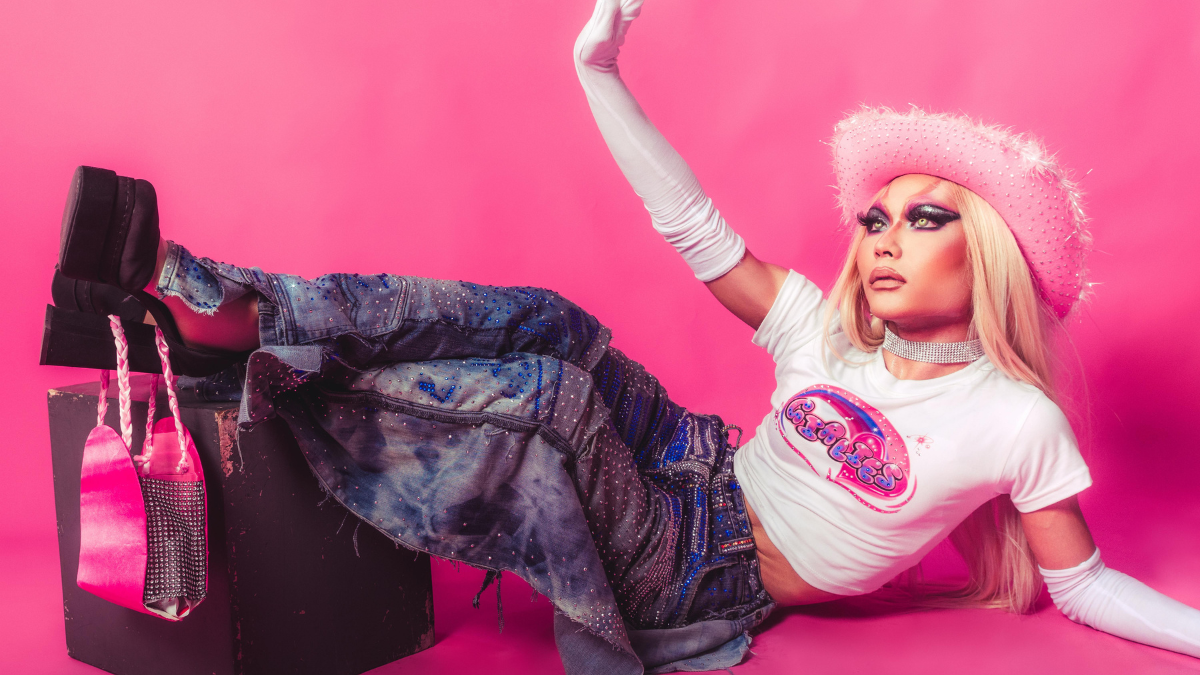If you looked at the VMAs this year, you probably noticed plenty of nods and references to iconic ’90s and 2000s outfits, yet again. The VMAs are known for being a playground of references to past celebrities’ looks, and this year was no different. Sabrina Carpenter referenced Madonna’s 1991 look, Halsey embodied Elizabeth Hurley’s 1996 Versace gown, and Paris Hilton recreated her very own iconic 21st birthday dress. Even Megan Thee Stallion’s performance paid homage to Britney Spears’ infamous 2001 I’m a Slave 4 U VMA act, with a real python around her neck.
We can’t seem to get enough of the ’90s and 2000s — it’s as if ‘iconic’ has become synonymous with Y2K and nothing else. Despite the rapid cycle of fashion trends, it doesn’t seem to be fading anytime soon. There’s always an element from that period to bring back. In fact, 43% of U.S. adults say nostalgia is a factor when shopping for clothing at least ‘a little’ and early 2000s fashion ranks as a favourite for 26% of consumers, surpassing other decades like the 1970s and 1980s. But Y2K is more than just a nostalgic fad at this point, it has become a broader cultural obsession.
Fashion moves quickly, so why does the Y2K aesthetic continue to dominate?
The warm embrace of nostalgia
Talking about our current cultural saturation with nostalgic content, Eugene Healey explains, ‘new technology seems subordinated to the refurbishment and the repetition of established cultural forms.’ In the context of Y2K fashion’s revival, platforms like Pinterest and TikTok play significant roles in keeping it alive, acting as digital fashion archives where past trends are constantly resurfacing.
This resurgence of older trends is evident in the U.S., where fit and flare denim pants — originally popular in the late ’90s and early 2000s — saw a 14% increase in sales during the 12 months leading up to August 2024 compared to the previous year.
But another obvious explanation is the comfort associated with familiar trends. Y2K nostalgia offers a reassuring escape from the relentless pace of change. It’s a product of and a response to our era, where recycling past hits feels like a safe bet. To innovate and move past nostalgic recycling requires a willingness to take risks. Y2K wasn’t considered iconic at the time; it was often seen as tacky or excessive. It’s only with hindsight that we can appreciate its boldness and playfulness. But in an era of recession, creative budget cuts, and profit-driven art and entertainment, innovation and risk-taking don’t seem feasible, pushing us instead toward past creations that have already proven successful.
There’s also the so-called ‘20-year cycle’ in fashion, which suggests that trends resurface every couple of decades. Given that we’re now two decades past the Y2K era, it makes sense that we’re seeing its revival. But the notable part is how Y2K isn’t just being revived — it’s saturating the fashion space. A quick search for Y2K on Google brings up numerous headlines about Paris Hilton’s new Y2K-inspired collection, the resurgence of the Y2K brand Cop Copines in Paris despite it no longer existing, and how Y2K dominated fashion catwalks in 2023 — and likely will continue in 2024. We’re witnessing a cultural moment where everything is getting Y2Ked, making it hard to envision aesthetics beyond this point.
But is it really 90s/2000s fashion, or is it more about the idea of Y2K — a mishmash of elements from the era, repackaged and filtered through a contemporary lens?
Nowstalgia and the algorithmic archive
‘TikTok has a weird way of making every single thing in style at once,’ notes Rebecca Jennings, pointing to the app’s role in curating and accelerating the trend cycle. This phenomenon, known as ‘Nowstalgia’ — a blend of ‘nostalgia’ and ‘now,’ embracing inspirations from every decade with a futuristic spin — captures how we’re experiencing multiple nostalgic trends all at once. In an article, Disha Bijolia argues that the ‘every 20 years’ rule of nostalgic trends isn’t a thing anymore: ‘Most spaces now are eclectic; instead of a saturated style, they have elements from movements all over, creating ultra-modern or even avant-garde designs.’ Algorithms play a significant role in this process.
But Y2K seems less about the specific time period itself and more about an aesthetic framework that borrows elements from that era and repackages them to fit a variety of identities and styles. The era itself was so maximalist and playful that there is a lot to borrow from. In that sense, Y2K isn’t really about the exact fashion of that time but about its essence: an era of playful, fun designs.
The last frontier of playfulness
So why does Y2K hold such a particular grip on us? I’d argue that it was the last era of fashion where playfulness reigned supreme. It’s not just a style; it’s an expressive and modular aesthetic that can fit a multitude of identities. In contrast, the fashion that followed — the Kardashian era, normcore, monochromatic looks — feels sleek and glamorous but ultimately lacks the same spirit of experimentation. It’s polished, yes, but also a bit boring and exclusive. Y2K represents a time when fashion was unafraid to be loud, brash, and unapologetically over-the-top. It’s this very quality that makes it so enduring, even in a cultural landscape that’s constantly hungry for the next big thing.
In an essay about ‘dressing for your inner child’, Ebony-Renee Baker notes, ‘Regardless of what our childhood experiences were actually like, thinking about the clothes we wore — which likely featured playful graphics, bright colours, and a general unseriousness — can more often than not bring up parts of our youth that we actually want to remember.’ And I think that’s what Y2K has that other trends can’t replicate: childlike playfulness and sweet nostalgia.
Featured image: SLAYTINA / Pexels

